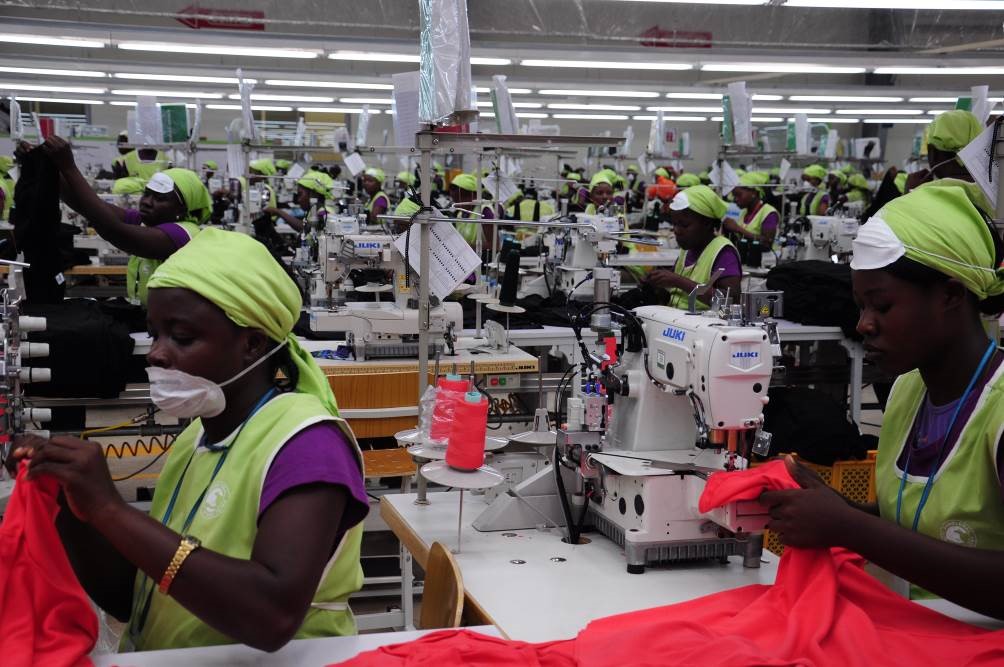In 1996, this exposé revealed the brutal living and working conditions in Haiti for Disney factory workers, a major issue that is still ignored today.

Today we truly see the power and grip of major brands on society. We are all consumers, consuming constantly through a variety of screens as well as through print advertising. A lot of people won’t start exercising until they have purchased hundreds of dollars worth of Nike gear. Others won’t consider any technological products other than Apple. Even children have fallen victim to our heavily branded society, pleading with caregivers to get them the same style of glasses or the same outfit as a favourite YouTuber, celebrity or Disney Channel superstar.
What a lot of people seem to forget, reject or downright ignore, are the labour conditions many of these products are made under. The major force in revealing these conditions was, at first, a group called The National Labour Committee, later renamed The Institute for Global Labour and Human Rights. Though they have currently suspended operations, the institute was instrumental in leading the American anti-sweatshop movement. Exposing conditions of workplace abuse, extreme overtime and a long history of underpaying workers from major, recognisable brands, the work of the company was drastic in changing attitudes towards many media conglomerates.
One of the companies most powerful tools was film. The institute made dozens of short films exploring child labour, workers riots violations and the effects of globalisation in brief, to-the-point documentaries, many available on YouTube. One of these films, titled Mickey Mouse Goes To Haiti, was widely viewed and shown in schools and universities to demonstrate violations of workers rights.
Mickey Mouse Goes To Haiti sees the NLC’s Executive Director, Charles Kernaghan, talk to Haitian workers from a Disney factory. There, the quota for order fulfilment is set so high, and workers are paid by piece, so that they can literally only make minimum wage or less. Often, this amounts to roughly two dollars a day. The filmmakers were denied access to the actual Disney factories, and so the documentary relies mainly on interview footage with workers and some film from inside others factories with similar, horrific conditions.
The documentary gives viewers as close to a first-hand experience of working in the factories as possible. The Haitian interviewees describe abuse from managers and higher-ups, the poverty they have been forced into due to their wages, and the horrors of living life on credit. It’s a truly sobering watch, and forces the viewer, especially today, to question what they are wearing, what they spend their money on.
The overarching message of the documentary, however, is not to move production back to the U.S, but to raise wages, improve working conditions and for Michael Eisner, the then president of Disney, to at least acknowledge the issue. The Haitian workers know their value, the profits they provide for the corporation, and ask only to be treated as human beings. Their shock and dismay at Disney’s business practices is exemplified when Kernaghan reveals how much one of the t-shirts they slave to make sells for in the U.S. The group jump back in horror, just as we should.

There is no evidence to prove that Disney has improved its labour conditions since the documentary or in recent years. A 2002 report uncovered workers creating Winnie The Pooh products in hot, unsanitary warehouses with unclean drinking water, often doing 14 hour shifts. In 2007 a Chinese Disney factory was found to be hiring underage workers and operating in unsafe conditions with reports of employee harassment and excessive overtime. Similar reports were published in 2012 and even as recently as 2018, Disney’s response the same as always; claiming to not be responsible for the sweatshops.
Disney received a tax break of over a 1 billion dollars in 2018 thanks to Trump’s tax giveaway for the wealthy. Their employees live on credit and can’t afford to feed their children. It’s as simple as it is horrifying, and witnessing the reality of these statistics in Mickey Mouse Goes To Haiti only drives the point home with a call to action and a plea for international recognition.
Subscribe to FIB’s Weekly Alchemy Report for your weekly dose of music, fashion and pop culture news!







